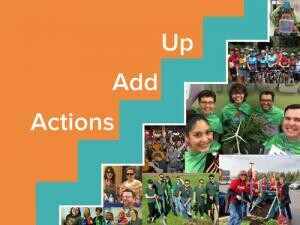Integrate Employee Engagement into Your Sustainability Efforts
If you’re reading this blog, you’re probably part of a team that’s doing extraordinary things to achieve aggressive environmental sustainability goals. Whether your goal is zero landfill, energy independence, or carbon neutrality, I’d wager that you’ve already accomplished a lot and aim to accomplish much more.

I’m Curious About How People Fit into Your Plans.
Yes, I know you appreciate that small team of brilliant technical staffers who help you identify and implement new technologies.
But what about everyone else—the people in cubicles, on the assembly line, driving fleet vehicles. Have you thought about the role those folks will have in your efforts to reduce waste?
In my experience, if you work around them— implementing sustainability measures that rank-and-file staff can’t break—you will likely achieve savings, but the results won’t be transformative. Amazing results—the kind that make the competition go slack-jawed— come from engaging everyone, and creating a culture where sustainable practices are the new normal.
I say this based on my work with Cool Choices, a nonprofit that partners with companies to engage employees around sustainability. Our approach uses a team-oriented game-based platform that makes it fun, social, and easy to be part of the sustainability solution.
And we’ve seen transformation happen. I remember a vice president at one company telling me how he watched employees interact with new staff months after our program had ended. When a new employee tossed paper into the wrong bin a veteran of our program put up his hand. “That’s not what we do here,” he said. “Recycling goes in the other bin.” For me that story is a vivid example of what culture change looks like—employees empowered to enforce shared norms with newcomers.
The sustainability lead in another organization provided his own definition of culture change, noting that Cool Choices got “the entire employee population moving in the same direction.”
When sustainability is part of the culture—when everyone embraces ambitious waste-reducing goals—the organization benefits in multiple ways.
- Innovation thrives. Instead of a few people thinking about opportunities to reduce waste, you’ve got hundreds or even thousands of minds on the problem. And that means more ideas as well as more willingness to try those ideas—so you are able to accomplish more, faster.
- HR is easier. Employees—especially millennials and the Generation Zers following them—want purpose-driven work. More than 8 in 10 want to help their employers achieve social and environmental goals (the statistic is 7 in 10 for all workers). So engaging everyone in sustainability makes work more fulfilling, reducing turnover.
- Increased profitability. Engaged employees miss less work, make fewer errors, and deliver higher quality outputs. All of that correlates to higher profitability.
- Enhanced corporate reputation. Can you image the impact if even half of your employees talked about the great stuff you were doing to reduce resource use? Suppose each employee told just one other person—a spouse, friend, or family member—about one of your successes. How could that affect your local reputation? What if some employees shared your accomplishments with friends on social media? In addition to being brand ambassadors your employees can be ambassadors for your sustainability efforts via their networks.
- Accelerated sustainability. In addition to all the long-term benefits outlined above, engaging employees around sustainability can yield immediate reductions in resource use.
Given these benefits, you might wonder why more entities aren’t rushing to engage employees. Honestly, some of them are but engagement efforts are often ineffective -- a poster in the lunchroom or a data-heavy article in the employee newsletter. Sharing technical information that’s only interesting to your team is droning, not engagement.
That said, there are plenty of effective ways to engage employees around sustainability. The simplest method is to catch people doing the right things and celebrate those actions so that others are motivated to act similarly. More generally, effective engagement includes:
- Compelling, plain-language stories about corporate successes—instead of talking about the reduction in energy intensity, share “we saved enough electricity to power 500 homes for a year.” This approach benefits from a little testing, which will help you develop memorable examples that cause people to tune in, not tune out.
- Clear evidence that others are adopting sustainable practices too—humans are social creatures and we take cues from our peers. So, make sure employees see examples of what others are doing right. You can create a virtuous circle of actions by recognizing and celebrating accomplishments.
- Proof that actions matter—motivate people by showing them how their small actions add up. “The district saved $150,000 in energy costs last year, which enabled us to add four part-time aides at the middle school.” “The savings from our anti-idling campaigns enabled us to invest in two electric vehicles at the warehouse; those vehicles improve air quality in the warehouse while further reducing fleet costs.”
- Two-way dialogue—as much as you need to share information you also need mechanisms to solicit ideas and feedback. Encourage people to submit ideas for increased energy savings and respond to the ideas submitted.
- Fun—which can be as simple as having people earn stickers by being part of the solution. (Really, adults like stickers more than you think.) When you make things fun you increase the likelihood that people will talk to each other about what’s happening, and conversations can uncover shared values, further accelerating momentum around sustainability.
Isn’t it time that you made employee engagement a priority in your sustainability efforts?
Have you found an especially helpful way of engaging employees in your sustainability efforts? Please share it in the Comments section – it can help others in our community who realize that it’s time to make employee engagement a priority.